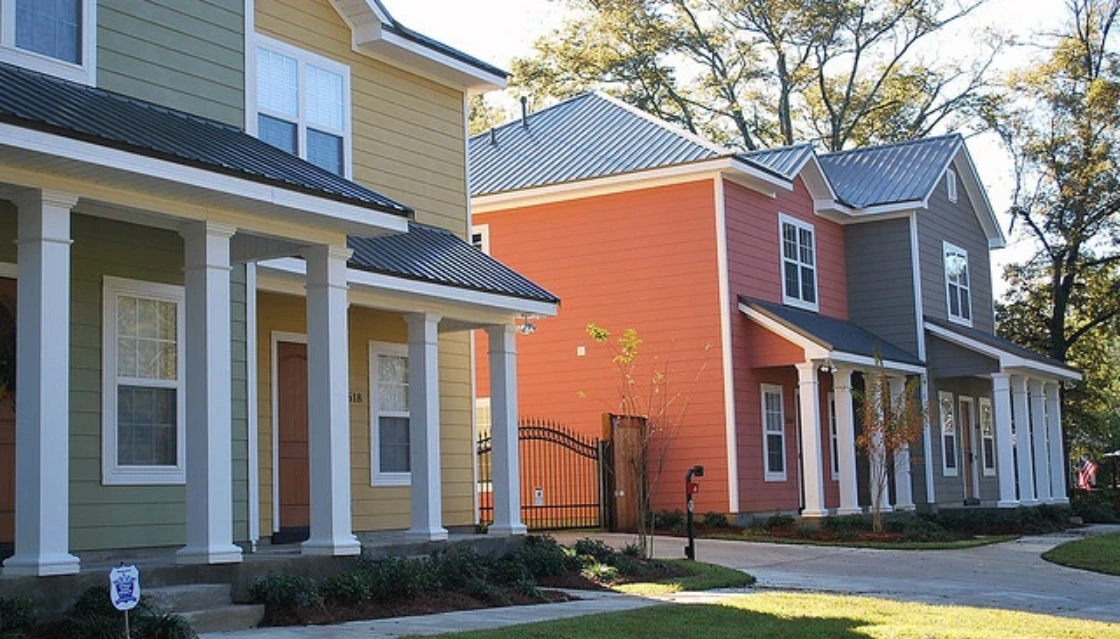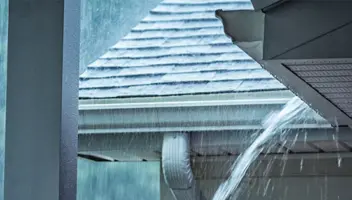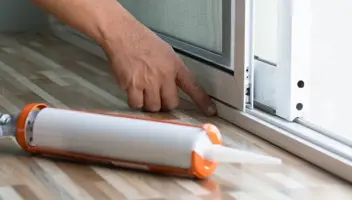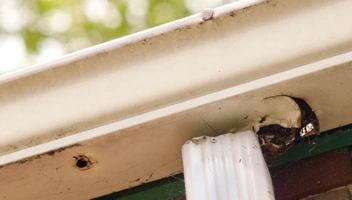Steel Roofs: What Are They About?

It’s not easy to recognize some steel roofs from a cursory glance. Innovation in steel roofing design and coating has reached a level where some steel roofing looks convincingly like clay, slate or even wood roofs.
So: what’s do you need to know about steel roofing before you make a purchase decision? Not to worry. Roofing is part of what we deal with every day at LeafFilter Eavestrough Protection, and we can help.
Basic Types of Roofing
The first thing to note about roofing material is that metal or not, there are typically just two types of roofs, at least from the visual perspective. There are roof shingles, which are small pieces that interlock to cover the roof – and are generally known by most homeowners as roof tiles – and there are the flat metal roofing panes or broad corrugated metal roofing sheets.
Beyond that, there is a bewildering variety of roofing products, based on the material from which they are made, shape, color, and feel. The most common are shingles – particularly asphalt shingles – but concrete roofing, wood roofs, clay tiles, slate roofing and metal roofing also feature.
Steel and Aluminum Roofs
The main difference between steel roofing and aluminum roofing is, of course, the material they are made from. Steel roofs are stronger, hardier, more rust resistant and more durable than aluminum roofing. The difference translates into the costs. Steel shingles, for example, typically cost more than aluminum shingles and also have a higher installation bill.
Both steel and aluminum roofing come in a choice of shingles, long panes or broad sheets with a variety of colors. When they come in long panes, they are known as standing seam roofing parts. When they are in the form of broad sheets with an undulating, wavy surface, they are corrugated roofing.
All steel roofing shingles, panels or corrugated sheets are usually coated or galvanized with zinc. The coating is first about rendering the metal corrosion resistant, but innovation in the industry has perfected coating techniques to the extent that most steel shingles are visually unrecognizable as metal. Some steel shingles coated with clay or stone even manage to look more like slate or wooden tiles than the standard real slate or wood shingles.
Advantages of steel roofs
The main advantage of metal over non-metal roofs is durability. Simply, steel roofing is sure to last as long as any house – on average about 50 years, compared to asphalt’s 20 years. That is, in fact, the key selling point of steel over non-metal roofing.
Other advantages of steel roofs are:
- Steel roofs are weatherproof:
Steel roofs match clay tiles in handling extremely hot climates. They also reflect sunlight and, therefore, keep the house cooler in hot seasons – which can translate into considerable savings on energy bills in summer. - Steel roofing offers multiple options:
Steel roofs provide a wide variety of choice with the rare advantage of convincingly imitating other types of roofing, such as slate or wood shakes. The effect is that steel roofs are able to substitute virtually any other type of roofing, all the while subtly blending into a variety of home styles, including the sleek modern look that most non-metal shingles have trouble achieving. - Steel roofs are low maintenance:
After installation, steel roofing requires minimal repairs or maintenance. They are virtually immune to the vagaries of weather, do not decay or break and will seldom collect debris. They, however, tend to lose paint over time and may dent under pressure or loosen from their fastening due to alternating hot and cold weather. - Steel roofing sheets are quickly installed:
A major advantage of metal sheet roofing is that they are easily and quickly installed. Shingles are less so.
The downside of steel roofs
The main downside of steel roofing, as with any metal roofing, is cost. They cost on average more than non-metal roofing, are more expensive to install and are not easily repaired by non-professionals – which translates to more costs. The other disadvantages include:
- Poor noise control: Metal roofs generally magnify the sound of rain or hail. The noise can be disturbing, particularly to young children.
- Snow trouble: It is a rare occurrence, but where the roof sloping is not sufficiently steep, the long, smooth structure of metal sheet roofs can lead to a buildup of snow, which can then slide in dangerous chunks onto people below.
Steel Roofs and Gutter Guards
Steel roofs typically require matching gutter guards both for aesthetic and practical reasons. Not only must gutter guards blend with the steel but they must also retain the structural integrity of the house. A good choice of gutter guards, such as those of LeafFilter Eavestrough Protection, also factors in the typical roof warranty conditions. The wide variety of LeafFilter gutter guards is an additional advantage because it matches the variety of steel roofs, more so than the shingle that often looks more like slate, asphalt or clay tiles.


